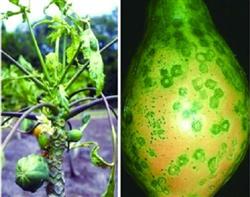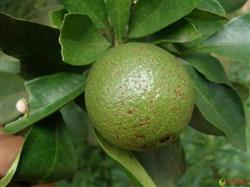How to manage planting navel oranges in spring?

How to manage planting navel oranges in spring? Is there any difference between a young tree and a fruit tree? Please also ask netizens who know that spring is the spring shoot stage of navel oranges, and it is also a time of year when there are more diseases and insect pests, and the tree growth is good or bad. the degree of pest control, high and low yield, fruit quality are all directly related to the management of this period. Therefore, the farming network has sorted out the management methods of navel orange in spring, which are listed below for netizens' reference. Planting time and density of navel orange in spring: the most suitable time for planting navel orange in spring is from mid-February to early March. If it is a nutrition cup seedling, it will be transplanted and planted after the spring shoot is ripe. The normal planting density of navel orange is 60 trees per mu. In addition to applying basic fertilizer such as green manure and farm manure, pay attention to combined application of calcium magnesium phosphate fertilizer in the planting hole. Spring management methods of navel orange young trees: first, pruning methods: do a good job of shaping navel orange young trees after the Beginning of Spring, cultivate high-yield tree shape and promote the development of robust spring shoots, and wipe off the adventitious buds on the trunk after spring shoots sprout. 2. Fertilization method: before the new shoots of navel orange were sprouted, each plant was treated with calcium magnesium phosphate fertilizer, urea and borax 0.2Mel 0.3 taels respectively. Third, intercropping method: cowpea, peanut, soybean and other summer green manure and legume crops were planted between rows of young navel oranges. Fourth, the method of removing buds: if there are buds in the new shoot of navel orange, all buds should be removed as soon as possible. The spring management methods of navel orange fruit trees are as follows: first, the outer branches of navel oranges are truncated before spring buds, weak branches and overdense branches are thinned and overdense branches are thinned, and long branches are adjusted. Spring bud fertilizer was applied before the middle of February, each plant was treated with calcium magnesium phosphate fertilizer and urea, borax 0.5ml and 1ml, mixed with light dung water or biogas liquid. Spray 0.3% urea and 0.2% potassium dihydrogen phosphate mixture for 2 times after the spring shoot stopped growing. Third, properly apply the new shoots to the navel orange fruit trees to make the new shoots distributed evenly and vigorously. Fourth, for navel orange trees that bloom too much, shake their flowers every 2 seconds and 3 days, and remove some leafless flowers. Reduce nutrient consumption, improve the quality of flowers and increase the rate of fruit setting. Fifth, spray 0.1% borax plus 0.3% urea and 0.2% potassium dihydrogen phosphate at the navel orange florescence. 6. when the navel orange blossoms are withered for 2 / 3, 50ppm gibberellin and 0.3% urea are sprayed once, and again half a month later. Spray Fangluisu and urea in the young fruit stage. Sixth, pay attention to dry irrigation and drainage of stagnant water in the flowering and young fruit stages of navel oranges. Management methods of navel orange Prevention and treatment of navel orange diseases
- Prev

How to prevent and cure papaya mosaic virus disease?
What is the harm of papaya mosaic virus disease? How to prevent and cure papaya mosaic virus disease? Also ask experienced netizens to help introduce that papaya mosaic virus is a destructive disease commonly occurring in papaya producing areas in recent years, so the farming network has sorted out the harm and control methods of papaya mosaic virus, which are listed in detail below.
- Next

What harm does thrips do to navel oranges?
What harm does thrips do to navel oranges? How to control thrips with navel orange? Also ask experienced netizens to help introduce thistle body tiny, generally only about 1mm, the naked eye is not easy to find, need to use more than 10 times magnifying glass observation, can see clearly; citrus thistle is mainly harmful to navel orange production.
Related
- Moge, come on! The staff of the peasant association in the producing area of cantaloupe were frightened when the crowd gathered.
- Causes and Solutions of low Fruit setting rate of Apple
- Symptoms and control measures of passion fruit virus disease
- Fruit growing lesson: how do apple orchards keep high yields?
- Can you build orchards in the mountains? What are the pros and cons?
- How to manage the coloring period of Crisson grape?
- This paper introduces the processing technology of two kinds of fig products.
- How much is a month for retired teachers in rural areas by 2020?
- How can strawberry planting increase sugar content? We should pay attention to management in many aspects.
- What are the cultivation techniques on how to improve the yield of golden fruit?

